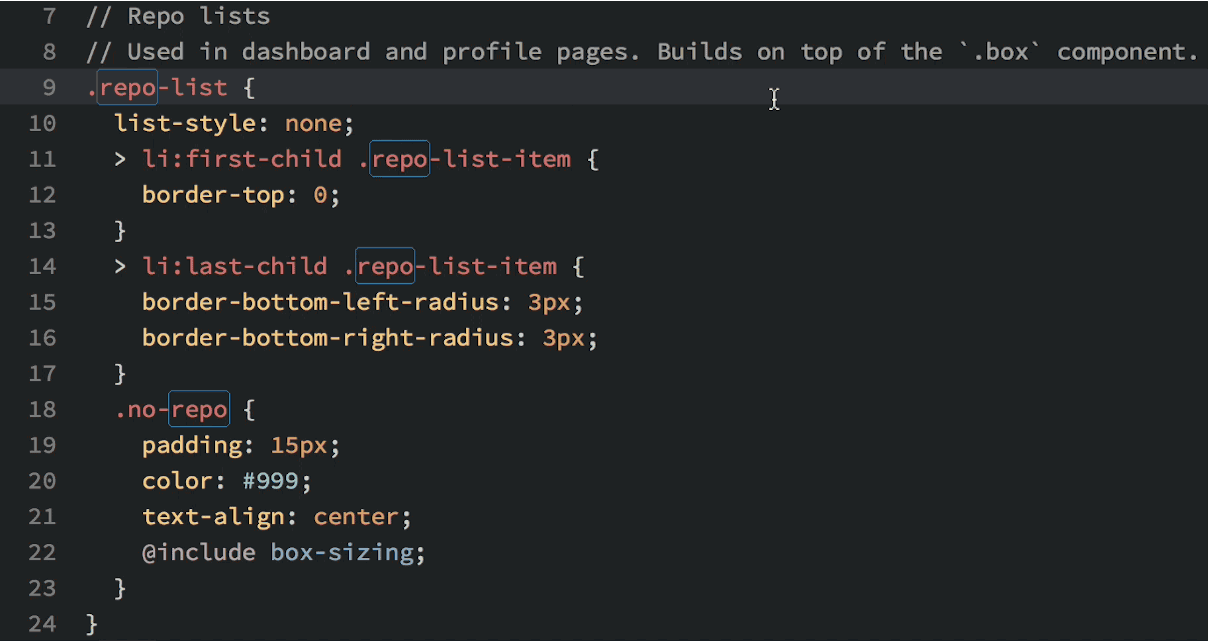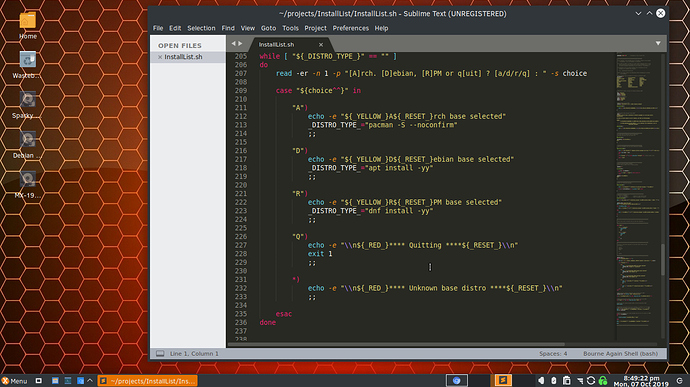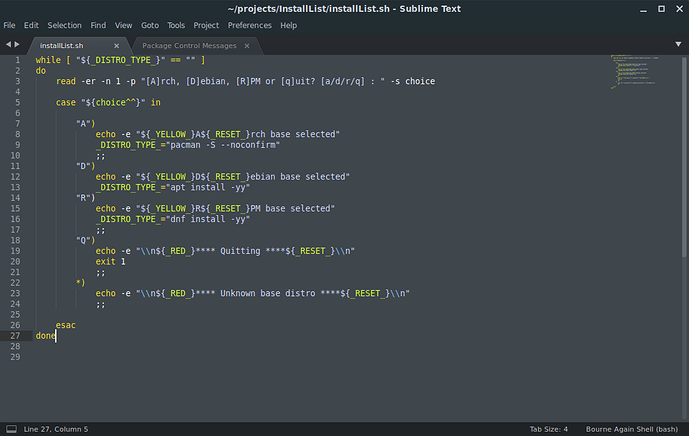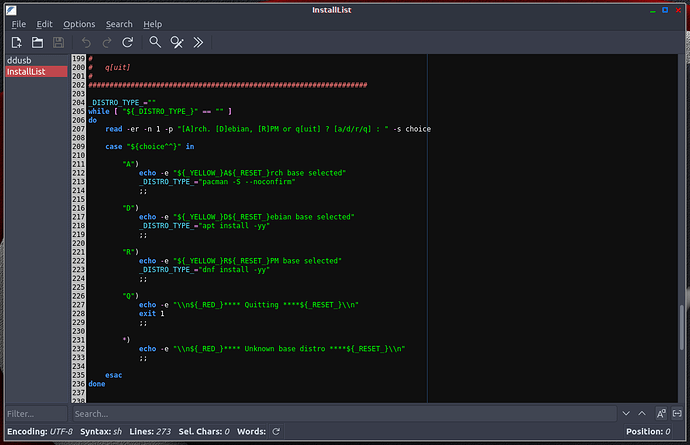I did not know they had Sublime Text set as the default, that is actually pretty cool in my opinion. 
I have been using Sublime Text for many many years now and I can easily say it’s the best editor I have ever used. Yes, I am comparing it to Atom, Brackets, and yes even Emacs and Vim.
I am not going to into a comparison for each editor because I don’t have days to write this reply.  So instead, here is the basic reason I use Sublime Text over all of the others. Sublime Text is innovative and powerful while at the same time very responsive and efficient on resources.
So instead, here is the basic reason I use Sublime Text over all of the others. Sublime Text is innovative and powerful while at the same time very responsive and efficient on resources.
Emacs and Vim require plugins to add any sort of innovation so while some things in Sublime can probably be done in those, it will require you to find plugins to make them work. Sublime has plugins as well but the method of finding them is a LOT easier.
Brackets and Atom are both based on Electron so they are VERY heavy in comparison to Sublime Text. History Lesson: Electron only exists because of Atom because Atom was created as a clone of Sublime Text and then they built Electron to make it work. GitHub was then purchased by Microsoft so Atom and Electron are now owned by Microsoft, yay!
Atom is a weak Electron clone of Sublime Text. Brackets is a weak clone of Atom by Adobe with the only value it adds is integration with Photoshop and that sort of stuff. So weak clones is what they are.
Now let’s talk about what makes Sublime Text Awesome!
First of all, let’s get the proprietary and evaluation period thing out of the way. Yes, Sublime Text is proprietary for sure but I would argue look at all the clones that exist . . . this was actually smart to do because imagine how many clones there would be if people could just fork the code rather than make it themselves. I am not saying I agree with it or like that it is closed but it was probably better for them to do initially due to the fact that so many clones were made. Atom, VSCode, Brackets and even CodiMD are clones of Sublime. CodiMD is less so due to it’s main purpose of being a self-hosted collaboration platform but the functions and shortcut schemes are directly from Sublime.
The evaluation period is something people harp on as well BUT they don’t read the last sentence most of the time.
“There is currently no enforced time limit for the evaluation.”
What does this mean exactly? It means that Sublime Text is free to use forever with a small stipulation that after the “evaluation” it will nag you to buy it upon every ~100 saves. Sublime is not restricted in features in anyway, it is extensible and it allows you to use it for as long as you want and if you are ok with the nag thing popping up every 100 saves then you can use it for free forever.
Now let’s talk about features.
Multiple Cursors
One of the best features that I love about Sublime Text is the Multiple Cursors feature and this allows you to edit multiple lines very quickly! Some applications have a thing called “Column Editing” (allowing you to edit multiple lines on the same column but that’s not what this is. Yes, you can do that with this BUT the value in Multiple Cursors is they can be independent from the rest.

In order to do what is in the GIF, you select some text and press Ctrl+D and it will select the next in the sequence so you can select as many or as few as you want. If you want to select ALL of them simultaneously you can do that too with Alt+F3.
“But Michael, this is just Find and Replace isn’t it?”
No, various people who asked me this every time I showed this. Sublime Text also has Find and Replace but this is actually much faster because all you have to do is select what you want, press Alt+F3, and just start typing. This cuts out many steps of opening another dialog, typing what to find, then what to replace and then clicking the button to apply it. This method is MUCH faster.
This might make you think “why does it have Find & Replace at all then?” The answer to that is because the Find & Replace in Sublime Text is MUCH more powerful than a basic find like many other editors. Once you press Ctrl+Shift+F you will be presented with a Find & Replace dialog that also includes Regular Expression searching (this is incredibly powerful), Case Sensitivity Searching, you can even select a big section and only search inside of that selection in Sublime.
If that wasn’t enough, Sublime Text’s Find & Replace works across all open files and folders. If you open a project folder in Sublime Text you can search for something and replace it for every file in that project whether it is currently being edited or not!
What is a Text Editor Without Additional Plugins?
I agree, good thing Sublime Text has a TON of plugins and it even has a well organized directory of those plugins. Package Control directory at https://packagecontrol.io has a listing of all the plugins for Sublime Text and it also tells you stats of the plugins like how many people are using it, when it was added/updated and ratings, links to docs, and etc.
There is one interesting thing about Package Control that might confuse people and that is the lack of Download or Install options on the website. There is a fantastic reason for this and that’s because the Package Control, package manager, is built into Sublime. Press Ctrl+Shift+P and this will open the Command Palette, this is powerful on it’s own, and type in Install. From here you search for the name of the plugin you want to install from browsing the website and that’s it, it will install it for you automatically.
I can go on and on about Sublime Text but this should be enough to explain why it is such a great editor. If you would like me to go on, just let me know. 
Maybe I should make a video about Sublime Text and just why it is such a great editor. 



